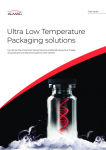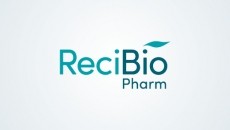BIO research outlines risks in changing accelerated approval pathway

The report says that changes to the Accelerated Approval (AA) pathway could mean therapies leave the market or fail to launch altogether: which could affect between 850,000 and 3.6 million patients in the US.
The current AA pathway
The FDA’s AA pathway is a program to speed market access for drugs addressing serious conditions. Established in the 1990s as a way to encourage development of new drugs to fight AIDS/HIV, it is intended for drugs that treat serious conditions for which no effective treatments exist. Drugmakers can gain approval based on achieving a surrogate endpoint – a biomarker assumed to indicate efficacy as opposed to a proven cure.
The majority of drugs taking advantage of the AA pathway are for cancer, and 82% are for orphan conditions: diseases that affect fewer than 200,000 people and therefore are commercially challenging to address.
Recipients of AAs are still ultimately required to prove clinical benefit: but they can enter the market before this is confirmed. A recent – and high profile – example is that of Biogen’s Alzheimer’s drug Aduhelm (the drug was approved by the FDA in June last year with the FDA acknowledging data for the drug were ‘complicated with respect to its clinical benefits’: and a Phase 4 trial focused on clinical benefit is starting this year).
New restrictions loom large
The pathway has ‘largely been considered a success in addressing areas of high unmet medical needs’, outlines the report – so what’s changed?
“There is growing sentiment from some payers, academics, and state and federal policymakers that the pathway needs to be significantly altered or restrictions applied to drugs approved through the accelerated approval pathway,” notes the BIO report.
Those calling for reform say that some products have been allowed to stay on the market for too long without proving clinical benefit. Of note is a new focus on proving clinical benefit earlier in the AA process.
BIO assesses 20 years of AA drugs
But BIO’s report, released at the BIO International Convention this month, aims to present an ‘unbiased, data-based and market-oriented investigation’ into AAs. The study was funded and supported by BIO, Rare Disease Company Coalition (RDCC), Global CEO Initiative on Alzheimer's Disease (CEOi), Sarepta, Travere, Gilead, Alexion, and Bristol Myers Squibb.
The report, ‘Calculating the value and impact of accelerated approvals’, focused on the impact that changes to AA would have on net present value (NPV) of therapies – a key decision point for drugmakers who must decide whether they have a chance of recouping their investment after years of development. It calculated the NPV of 93 primary AA therapies from 2001-2021.
The report’s conclusions refute the criticism and underline the risks of changing regulations and slowing the timeline of the FDA’s Accelerated Approval pathway, according to BIO.
“We estimate that 33% to 66% of accelerated approvals at the median delay of three years will no longer have a net positive NPV, and would be at high-risk of not coming to market or being developed at all,” the report finds. “We estimate these at-risk therapies address the needs of 850,000 to 3.6 million patients, depending upon our cost assumptions and estimated delay time.”
For most of the orphan conditions currently lacking treatment in the US, each condition impacts a maximum of 330 people – an incidence rate less than 1/1,000,000.
Given that 82% of AAs are for orphan indications, this “extremely high number of orphan indications explains the need for the use of surrogate endpoints in the accelerated approval pathway,” notes the report.
Substantial changes to the accelerated approval pathway will likely render the potential development of these therapies to treat many rare diseases economically untenable, it says.
Larger, shorter trials are more likely to have a positive NPV, notes the report. But most accelerated approvals are for orphan indications: and the smaller the number of participants, the longer it takes to collect the required evidence.
Furthermore, the majority of innovation is driven by small companies (the report finds that there is a 63% probability that a blockbuster therapy originated in a small company): and alternations to the AA pathway would put therapies developed by such companies at risk.
Meanwhile, secondary indications can often be used to generate a positive NPV in AA. But the majority of AAs only have one secondary indication: while genetically targeted therapies don’t have the opportunity for secondary indications.

















